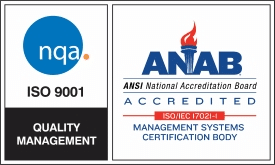- Solutions
- Capabilities
-
-
Design
-
Fabricate
-
Assemble & Test
-
QA
-
-
- Fabricated Parts
- Industries
- About
Get Engineering Help:(978) 538-0808
End effectors for the semiconductor industry are designed with specialized technical features and components to ensure that they can safely and efficiently handle delicate electronic components such as silicon wafers, integrated circuits, and microchips. Here are some of the technical features and components that are commonly found in end effectors for the semiconductor industry:
1. Material selection: End effectors used in the semiconductor industry are typically made from materials that are non-contaminating, such as stainless steel or aluminum. This is important to prevent any particles or impurities from being introduced into the manufacturing process.
2. Cleanroom compatibility: End effectors for the semiconductor industry are designed to be compatible with cleanroom environments. This means that they are designed to minimize the generation and shedding of particles, and they can be easily cleaned and sanitized to maintain a clean environment.
3. Precision alignment: Many end effectors used in the semiconductor industry require precise alignment with the electronic component being handled. This is achieved through the use of precision bearings, linear guides, and other specialized components.
4. Customization: End effectors used in the semiconductor industry can be customized to match the specific requirements of the manufacturing process. This may include custom shapes, sizes, and gripping mechanisms.
5. Force and pressure control: Many end effectors used in the semiconductor industry require precise control over the force and pressure applied to the electronic component being handled. This is achieved through the use of pneumatic, hydraulic, or electric actuators, as well as sensors and feedback systems.
6. Non-contact handling: Some end effectors used in the semiconductor industry, such as Bernoulli end effectors, are designed to handle electronic components without any contact. This is important to prevent any damage or contamination to the component being handled.
7. Integration with automation systems: End effectors used in the semiconductor industry are often integrated with automation systems to enable high-speed and high-volume manufacturing processes. This may include integration with robots, conveyors, and other automated equipment.
1. ESD protection: End effectors used in the semiconductor industry often incorporate electrostatic discharge (ESD) protection to prevent damage to sensitive electronic components. This may include the use of conductive materials or coatings, or the incorporation of ESD suppression components such as varistors or diodes.
2. Temperature control: Some end effectors used in the semiconductor industry require precise temperature control to prevent thermal damage to electronic components. This may be achieved through the use of cooling or heating elements, as well as temperature sensors and feedback systems.
3. Adhesion control: End effectors used in the semiconductor industry may require precise control over the adhesion between the end effector and the electronic component being handled. This may be achieved through the use of special coatings or surface treatments, or through the use of vacuum or electrostatic forces.
4. Non-magnetic materials: End effectors used in the semiconductor industry may need to be made from non-magnetic materials to prevent interference with magnetic components or magnetic fields in the manufacturing process.
5. Custom grips: Some end effectors used in the semiconductor industry require custom grips to match the shape and size of the electronic component being handled. This may include the use of suction cups, custom clamps, or other specialized gripping mechanisms.
6. Light weight: End effectors used in the semiconductor industry may need to be lightweight to reduce the load on robots or other automated equipment. This may be achieved through the use of lightweight materials such as aluminum or carbon fiber.
7. Durability: End effectors used in the semiconductor industry must be durable and able to withstand repeated use in harsh manufacturing environments. This may involve the use of hardened materials or specialized coatings to protect against wear and corrosion.
These are just a few more examples of the technical features and special components that are commonly found in end effectors for the semiconductor industry. The specific features and components used will depend on the specific requirements of the manufacturing process and the electronic components being handled.


